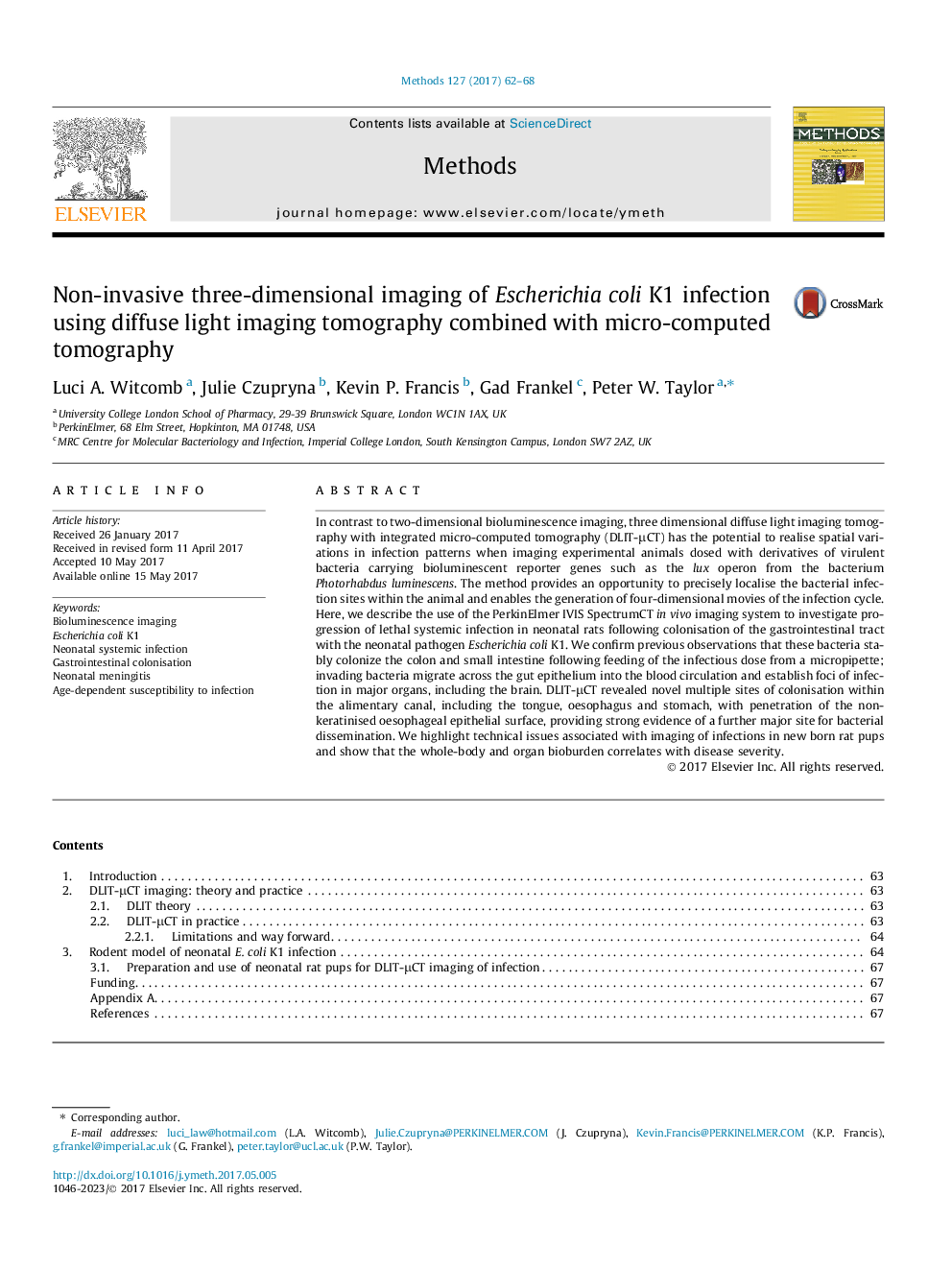| Article ID | Journal | Published Year | Pages | File Type |
|---|---|---|---|---|
| 5513374 | Methods | 2017 | 7 Pages |
â¢DLIT-μCT was used to track progress of E. coli K1 infection in the neonatal rat.â¢E. coli K1 strain A192PP was derivatised with the luxCDABE operon.â¢4D movies of the infection cycle revealed colonisation and invasion dynamics.â¢Novel sites of colonisation of the alimentary canal were identified.
In contrast to two-dimensional bioluminescence imaging, three dimensional diffuse light imaging tomography with integrated micro-computed tomography (DLIT-μCT) has the potential to realise spatial variations in infection patterns when imaging experimental animals dosed with derivatives of virulent bacteria carrying bioluminescent reporter genes such as the lux operon from the bacterium Photorhabdus luminescens. The method provides an opportunity to precisely localise the bacterial infection sites within the animal and enables the generation of four-dimensional movies of the infection cycle. Here, we describe the use of the PerkinElmer IVIS SpectrumCT in vivo imaging system to investigate progression of lethal systemic infection in neonatal rats following colonisation of the gastrointestinal tract with the neonatal pathogen Escherichia coli K1. We confirm previous observations that these bacteria stably colonize the colon and small intestine following feeding of the infectious dose from a micropipette; invading bacteria migrate across the gut epithelium into the blood circulation and establish foci of infection in major organs, including the brain. DLIT-μCT revealed novel multiple sites of colonisation within the alimentary canal, including the tongue, oesophagus and stomach, with penetration of the non-keratinised oesophageal epithelial surface, providing strong evidence of a further major site for bacterial dissemination. We highlight technical issues associated with imaging of infections in new born rat pups and show that the whole-body and organ bioburden correlates with disease severity.
